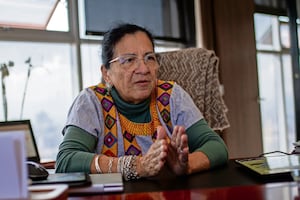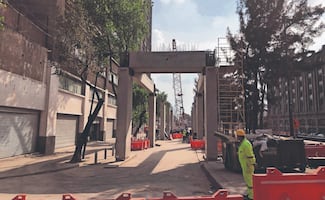Más Información

FGR acusa a María Amparo Casar de uso ilícito de atribuciones por pensión vitalicia; comparecerá en el reclusorio Oriente

“No está en riesgo el derecho a la información”, asegura Nashieli Ramírez Hernández, secretaria general de la Contraloría de la CDMX
The huge accumulation of sargassum in beaches with no hotels operating and that are not cared after by state and local governments in Quintana Roo caused the death of almost a hundred sea turtle hatchlings in the coast of Tulum , which after being born and trying to reach the sea, got caught and exposed in the piles of macro-algae .
The issue became viral in recent days and was confirmed by Cancún’s Sargassum Monitoring Network , who came to the rescue of the youths who tried to save the small chelonians last weekend and who reported what happened on their social networks.
In interview with EL UNIVERSAL , the hydrobiologist Esteban Amaro explained that the dead turtles found on beaches of the Biosphere Reserve of Sian Ka’án , in the municipality of Tulum, were 86 , and were of the species Chelonia-mydaso green turtle , and come from the broods of adult turtles performed during last May , at the beginning of the spawning season .
Near August , the 80 to 150 eggs deposited by each female turtle in the beaches of the Mexican Caribbean , start to hatch, that is, they break, and countless turtle hatchlings are born, which, naturally, are headed to the sea to continue their life cycle.
In this journey, many of them die of being caught by their natural predators and only 20% , on average, survives. As a matter of fact, just one per thousand makes it to adulthood .
The massive reach of sargassum and its accumulation and its decay has added to the natural dangers faced by chelonians . In this case, after leaving the shell, the little turtles walked to the coast, but many got caught in the algae.
“The problem is that no one looks after these beaches , because they have no tourist infrastructure ; there are no hotels and no houses, so no one cleans the sargassum there, which accumulates in piles and has been drying for months; it even is like a rock now.
“So then you have the little turtles wanting to pass through the piles, a wall of more than a meter high in some places, and they can’t, they get caught, and die. It’s exhausting for them. And that’s what happened, they couldn’t climb the sargassum barrier ,” said Amaro.
He said that when they received the report last Friday , when they got to the place, near the area of Boca Paila , they saw that the youths that had called them were trying to open paths among the sargassum and rescue some of the turtles, but many of them had already died.
“That’s what happening in secluded beaches , the ones not visited by massive tourism , the ones that are not in front of hotels , but that are inside natural protected areas or that are nesting sites ; that’s why the sargassum problem is not only concentrated and does not only harm where tourists can see and where the government helps, it’s much wider, and already has severe environmental impact in marine ecosystems,” he highlighted.
He mentioned the case of the Mahahual reef , in the south of Quintana Roo, considered until some years ago, as one of the best-preserved regions of the Quintana Roo coral reef and from all the Mesoamerican Reef System (SAM) , shared with Belize , Guatemala , and Honduras .
The big concentrations of sargassum accumulated in the beaches of Mahahual and Xcalak have affected the reef , he said.
Noticias según tus intereses
[Publicidad]
[Publicidad]














